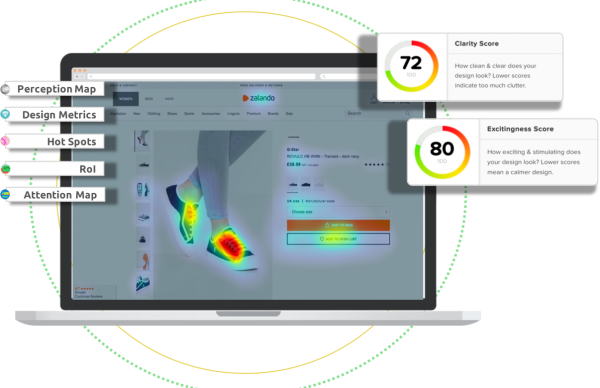We value your privacy
This website uses cookies to ensure you get the best experience on our website.
 Skip to main content
Skip to main content
This website uses cookies to ensure you get the best experience on our website.
Data has long been heralded as the panacea for all problems marketers face. From poor click-through rates to unopened emails, spreadsheets of data were deemed to fix it all. To an extent, collecting data works. You can test whether people prefer one subject line or another. You can see how many website hits convert into leads based on site design. And you can check whether one product is more appealing than another.

But you can’t understand why. You’ve got the numbers, yet the story is missing. So, how you can you replicate it? How can you turn abstract tests into repeated success and best practice?
A huge call-to-action box might work for a free sample or discounted product, but will it have the same effect on a pricey service page?
User testing, while helpful, is limited in what it can tell you. You get the metrics about how people behave – but nothing about why they react or engage with designs.
To get the ‘why’ and the ‘how’, simply gathering more data isn’t the answer.
For data to emit the right knowledge, it needs two qualifiers: is it the right data? And is there insight into human behaviours? If so, you can start to determine the reasons behind the figures.
To obtain this reasoning – to humanise the data – a rapidly growing number of businesses and agencies are turning to neuromarketing. It’s the combination of neuroscience with marketing, and is helping marketers understand why people like or dislike various marketing assets. It’s letting brands understand what drives people’s decisions – and therefore what could impact their revenues. Most importantly, it answers the question ‘why’.
In an interview with Forbes, assistant professor at Harvard Business School, Uma R. Karmarkar discusses the relationship between neuroscience and marketing – she has PhDs in both topics. “People are fairly good at expressing what they want, what they like, or even how much they will pay for an item … But they aren’t very good at accessing where that value comes from … [Neuroscience] can help us understand those hidden elements of the decision process”.
By using neuroscience, agencies and businesses can attach reasoning to why certain elements do or don’t work. From there, it’s possible to predict how well a web banner or sales ad will go down, before it’s even released to the public.
Neuromarketing techniques encompass a range of tests and studies, including eye tracking, facial encoding and brain imaging (fMRI and EEG), sensory marketing and psychology. These techniques let marketers add the human story to the figures: they can see what customers look at when viewing an advert; they can see what’s distracting people away from the main message; they can see why and how people engage with certain colours.
Neuromarketing isn’t some flash-in-the-pan either. By 2023, the global neuromarketing technology market is predicted to reach $100 million. And it’s not hard to implement: for example, with our saliency maps, there’s no need to install any code. It’s plug-and-play, meaning you can get insight instantly. When you consider 81% of marketers say implementing data-driven marketing strategies is complicated, having simple access to information lets you start testing and tweaking straight away. This lets you increase conversion rates, improve the effectiveness of designs, and drive greater revenue.
Intrinsic human behaviour is unlikely to change. People make 90% of buying decisions subconsciously; 50% of the brain’s processing power is used for visuals; and it can take just 50 milliseconds to lose a positive impression on your audience.
Effective design – from the thickness of your lines to the colours you use – can make a huge difference in how you impress, attract and convert your audiences. And now, with neuromarketing, you can see how and why it works.



Check out our latest top tips on how you can use EyeQuant to spy on your competitors, analyse mobile...
Read more
In our latest blog we explore how to use neuroscience to help create higher performing digital products.
Read more
Figma is the go-to prototyping platform for many UX and web designers – and not without reason. Its functionality,...
Read more